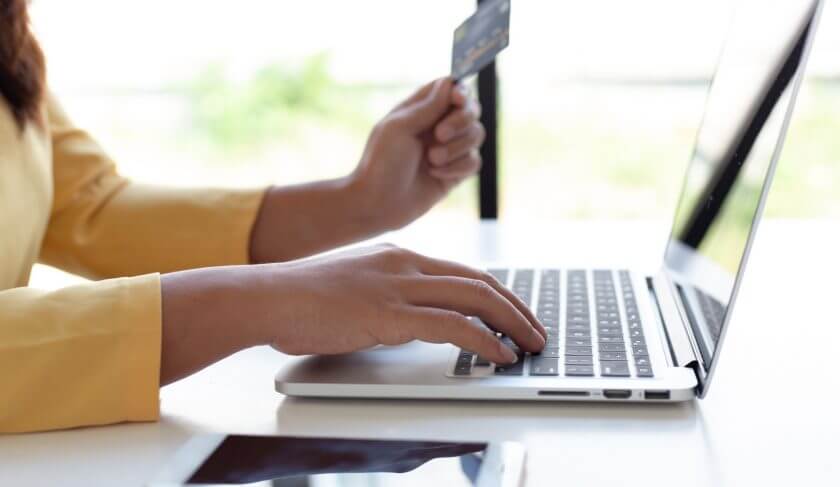
If you’re still waiting for your stimulus check, check your recycling bin for a plain white envelope with “Money Network Cardholder Services” in the return address window. Inside you’ll find a prepaid Visa debit card loaded with your CARES Act stimulus payment — up to $1,200 per individual.
First we had paper stimulus checks, then electronic stimulus direct deposits, and now the IRS is getting into plastics. Nearly four million payments will be delivered to U.S. taxpayers via prepaid Visa debit cards, according to the U.S. Department of the Treasury.
Who Is Getting a Stimulus Debit Card?
Me, evidently. And to what do I (and millions of other taxpayers) owe this honor? Here’s what the Treasury department says:
“EIP Cards are being distributed to qualified individuals without bank information on file with the IRS, and whose tax return was processed by either the Andover [Massachusetts] or Austin [Texas] IRS Service Center,” according to the Treasury announcement.
Included with the stimulus debit card are instructions on activating the card, setting a PIN and how to see your balance. (Call the number on the back of the card or register the account at EIPCard.com.) If more than one person’s name is on the card, the primary cardholder must do the activation honors.
There’s also a summary of terms and fees,, with more details about the debit card, issued by MetaBank, on the EIP Card website. And that’s where things get interesting.
The Cost of Using Your Visa EIP Card
Unlike stimulus payments that were directly deposited into bank accounts or paid out with a paper check, accessing the cash on a Visa EIP Card can trigger fees. There are charges for:
- ATM withdrawals: Your first withdrawal from an out-of-network bank costs nothing. Subsequent withdrawals are $2 each. Note that the ATM operator may also charge a fee. There’s also a $3 per withdrawal surcharge for international ATM withdrawals.
- Bank teller withdrawals: Your first over-the-counter withdrawal is free; subsequent in-person withdrawals carry a steep $5 fee.
- Balance inquiries via ATM: In- and out-of-network balance inquiries at an ATM cost $0.25.
- Lost or stolen card reissuance: If your card goes missing you’ll pay $7.50 to have it reissued. Need it fast? Add $17 to the replacement fee for priority shipping.
Remember, small-dollar fees can add up. Let’s say you make five ATM withdrawals (the first one’s free but the next four are at an out-of-network machine where the average surcharge is $3.09), four teller withdrawals (the first is also free) and five balance inquiries. You’ve spent more than $36 on fees, or 3% of your stimulus payment if you got the full $1,200.
GET WEEKLY LIFE AND MONEY INSIGHTS: Subscribe to the HerMoney (free!) newsletter today
On the plus side, you won’t find fees that are common with other prepaid debit cards on the MetaBank prepaid Visa. There is no activation fee, monthly account maintenance fees, and no inactivity fees. Because there is no credit feature, there are also no insufficient funds or overdraft fees if you attempt a transaction that’s more than your account balance. And, according to the Treasury, the prepaid card provides the same consumer protections you get at a traditional bank against fraud and loss. (MetaBank is a member of FDIC.)
Best Ways to Avoid EIP Card Fees
Debit card fees don’t need to be a problem. Play your EIP Card right, and you can keep all that stimulus cash to yourself. Some tips:
Register your card online: You can get all the information you need (account balance, transaction history) for free if you create an account on the EIP Card website at EIPCard.com.
Get the app: Use your online user ID and password to access the Money Network Mobile App to avoid account inquiry fees and get push notifications on account activity and balance alerts.
Get cash back while you’re shopping: If a retailer allows cash withdrawals on top of your purchase amount, use the debit-PIN option at the register. This will help you avoid ATM fees.
Withdraw the entire balance at once. As long as it’s your first withdrawal, you’ll pay no ATM fee, even at an out-of-network ATM. The gotcha: The daily withdrawal limit is $1,000. If your stimulus payment is more than that, your excess balance will remain on the card.
Use an Allpoint brand ATM: This is the network of choice for the EIPCard. Withdrawals are free at any ATM carrying the Allpoint logo. You can use MetaBank’s mobile app to locate an in-network ATM.
Check balances and transaction history by phone or online: It’s free to check your balance by calling customer service (800-240-8100/TTY: 800-241-9100) instead of using an ATM. It’s also free to check your debit card balance and get 12 months of transactions at EIPCard.com.
Transfer the entire balance into your personal bank account: This is a free and easy way to control your money and not have to worry about debit-card fees.
What About that Stimulus Card Expiration Date?
Don’t be mislead by the expiration date on your debit card: Stimulus funds do not expire. If you haven’t used up your balance by the date embossed on the card you’ll simply have to call customer service to request a refund check.
You shouldn’t plan on having a lasting relationship with this card card, anyways. Because top-ups (adding money to the card) aren’t allowed, once you’ve spent or withdrawn your stimulus payment money, your EIPCard is useful only as a small plastic windshield scraper.
MORE FROM HERMONEY:
- The $1,200 Coronavirus Checks: How Much Will You Get, When, And What To Do With It
- How To Get Every Unemployment Benefit You’re Entitled To Right Now
- 6 Things We Predict Will Never Go Back to “Normal” After Coronavirus
GET WEEKLY LIFE AND MONEY INSIGHTS: Subscribe to the HerMoney (free!) newsletter today







